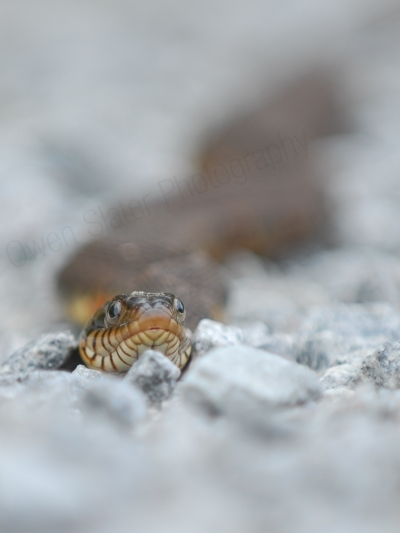 Believe it or not, there are! A grand total of 7 native species of lizard live in Canada so while we won’t win any lizard biodiversity awards we at least have a few hardy species that deserve respect for being able to survive here. Not only that, but the one I was searching for, the greater short-horned lizard, has the unique ability to shoot blood from its eye!
Believe it or not, there are! A grand total of 7 native species of lizard live in Canada so while we won’t win any lizard biodiversity awards we at least have a few hardy species that deserve respect for being able to survive here. Not only that, but the one I was searching for, the greater short-horned lizard, has the unique ability to shoot blood from its eye!
Finding any of these lizards can be challenging at the best of times but compounding things is that this species is a master of camouflage, only a few inches in length and unfortunately, critically endangered due to habitat loss.
Never one to be deterred by long odds, I set out to find one. The searching process involved slowly walking along south-facing, rocky hills in a slow and meticulous manner while keeping my eyes fixed on the ground immediately in front of my feet. Only when the lizard is about to be inadvertently stepped on will it bolt from cover. Thankfully, my good luck that week continued and this one scurried from cover shortly after starting the search.
They don’t view humans as predators so I didn’t have to worry about getting a squirt of blood in my face while I photographed it! They save that secret weapon for foxes, coyotes and other would be predators. By rapidly increasing the blood pressure around their eyes, it’s believed they rupture a small blood vessel causing blood to shoot as far as 2 meters. The would be predator understandably becomes startled and distracted long enough for the lizard to run for cover, or if it was already picked up, the blood is known to be mildly noxious causing the predator to drop it! If that wasn’t enough they also have the ability to inflate their bodies with air to become a sharp, spiky balloon. With these remarkable and effective survival strategies, all they need from us is to curtail the destruction of their habitat and they should be able to survive for generations to come.

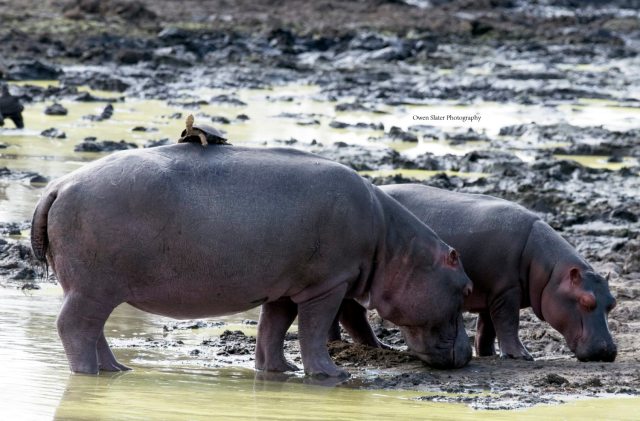






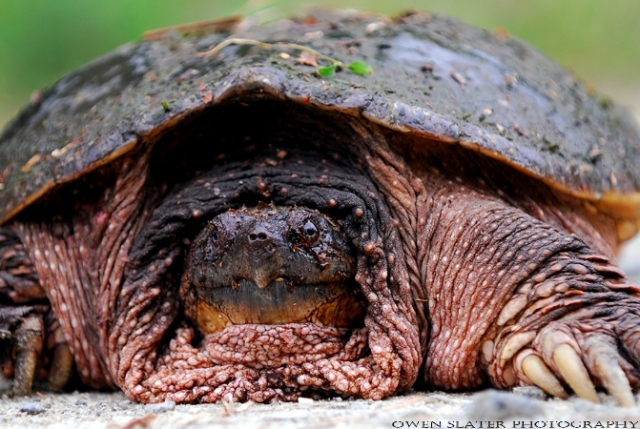
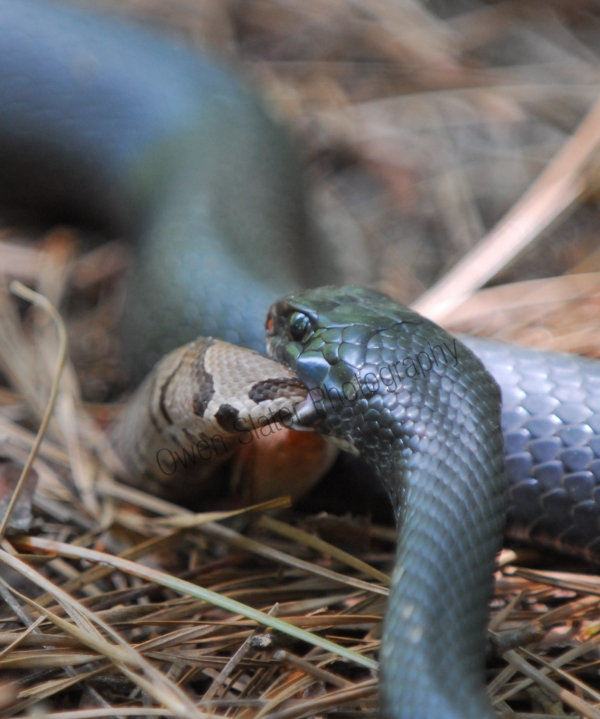 I was walking along a path in Alligator River National Wildlife Refuge when I heard lots of rustling behind where I had just come from. I turned back and saw a black snake flopping around on the ground and then all of a sudden it stopped. I raced back with my camera and started taking pictures. It wasn’t until I got close enough that I realized this black racer had ambushed a juvenile copperhead (venomous) and was in the process of eating it! The only way this snake would be able to eat the venomous copperhead without dying is if it managed to get the head into it’s mouth before the snake could bite it, and then suffocate it to death which must have been what the initial rustling was. The next few photos are of the racer consuming the copperhead, an event that to my knowledge has never been documented or photographed before!
I was walking along a path in Alligator River National Wildlife Refuge when I heard lots of rustling behind where I had just come from. I turned back and saw a black snake flopping around on the ground and then all of a sudden it stopped. I raced back with my camera and started taking pictures. It wasn’t until I got close enough that I realized this black racer had ambushed a juvenile copperhead (venomous) and was in the process of eating it! The only way this snake would be able to eat the venomous copperhead without dying is if it managed to get the head into it’s mouth before the snake could bite it, and then suffocate it to death which must have been what the initial rustling was. The next few photos are of the racer consuming the copperhead, an event that to my knowledge has never been documented or photographed before!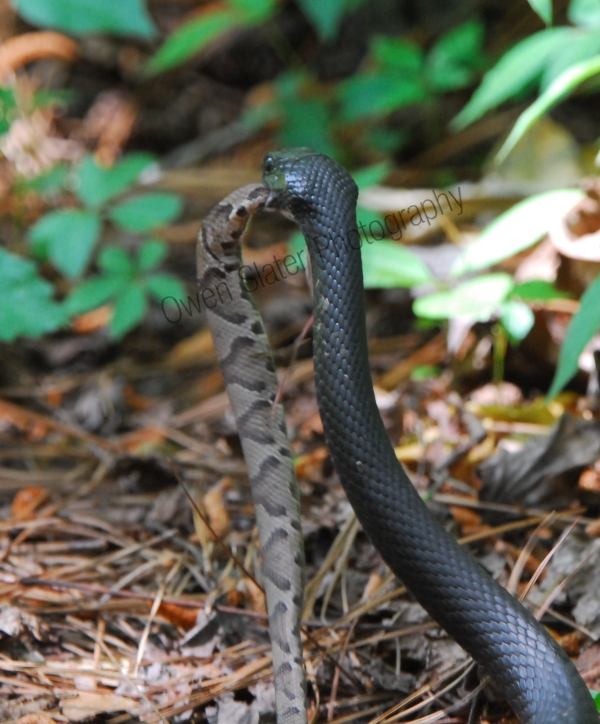 After less than 30 seconds, the black racer elevated the front part of it’s body off the ground and slithered into the bushes with the copperhead firmly grasped in the mouth and two thirds of the body dangling alongside the racer.
After less than 30 seconds, the black racer elevated the front part of it’s body off the ground and slithered into the bushes with the copperhead firmly grasped in the mouth and two thirds of the body dangling alongside the racer.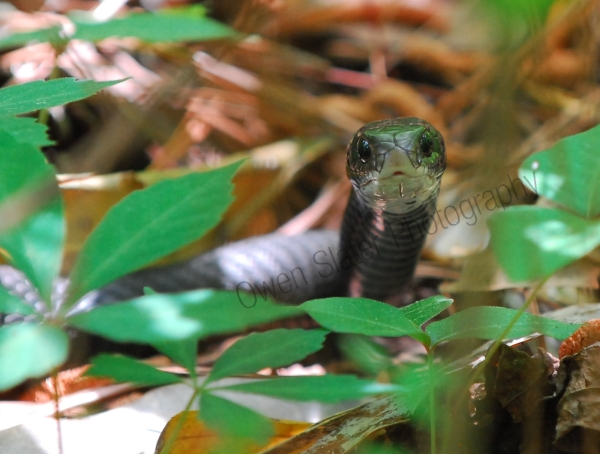 I took this photo just after the snkae had finished off the copperhead. No doubt it was going to need to rest and digest for awhile.
I took this photo just after the snkae had finished off the copperhead. No doubt it was going to need to rest and digest for awhile.

